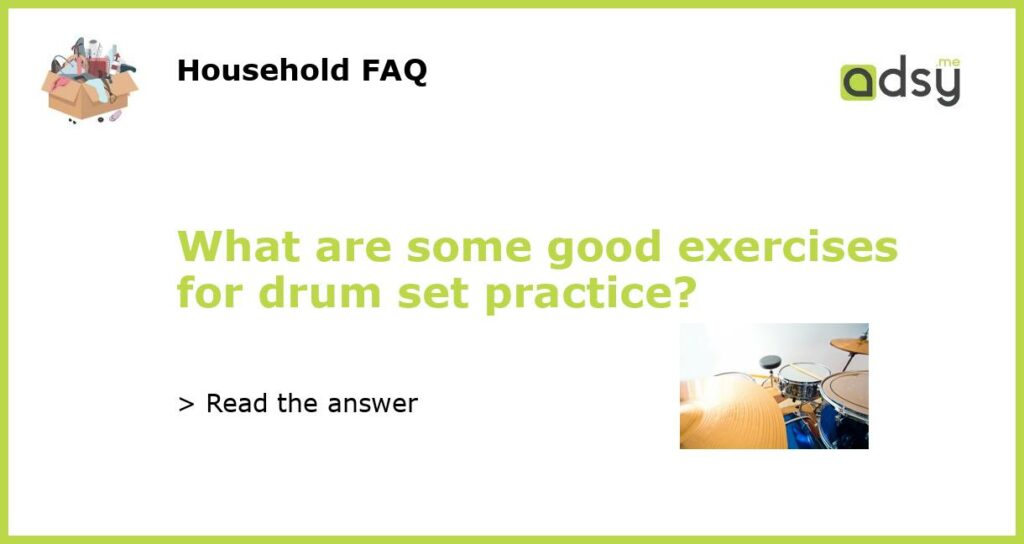Learning to play the drums requires practice and discipline. It is important to have a consistent practice routine to improve your skills and become a better drummer. In this article, we will discuss some good exercises for drum set practice.
Stick Control
Stick control exercises are great to improve your hand control and build strength. A good exercise for this is the “Single Stroke Roll.” Begin by playing alternate strokes with each hand on a snare drum or practice pad. Start slowly, and gradually increase the speed as you get more comfortable. You can also practice “Double Stroke Roll,” “Paradiddles,” and “Flams.”
Independence
Drummers must develop independence, which means different parts of your body will be doing different things at the same time. A popular exercise for independence is the “Four-Way Coordination” exercise. This exercise involves playing different rhythms with your hands and feet simultaneously. You can start with a simple exercise such as playing quarter notes with your feet while playing eighth notes with your hands.
Timing
Timing is an essential aspect of playing drums. Practicing with a metronome is a great way to improve your timing. Start with a slow tempo and gradually increase it as you become more comfortable. Practice playing different rhythms and grooves with the metronome.
Foot Technique
The bass drum is an essential part of the drum set, and it’s important to have good foot technique to create a solid groove. A popular exercise for foot technique is the “Heel-Toe” technique. This technique involves using the heel and toe of your foot to play rapid single strokes, creating a double stroke roll. You can practice this technique on a bass drum or practice pad.
Improvisation
Improvisation is an essential skill for drummers, allowing you to express your musical creativity. A great exercise for improvisation is to play along with your favorite songs and try to add your own fills and variations. Experiment with different rhythms and grooves, and challenge yourself to create something unique.






